

Experience Is Everything – The Ultimate UX Guide
source link: https://www.tuicool.com/articles/hit/rYjIzem
Go to the source link to view the article. You can view the picture content, updated content and better typesetting reading experience. If the link is broken, please click the button below to view the snapshot at that time.
Since the advent of the computer, there has been no consensus on how to engage with technology. Over decades, patterns proven to make systems easier to use began to emerge. The practice of designing and measuring digital products that are intuitive and easy to use is the goal of user experience designers .
User experience (UX) design experts have a deep understanding of design, technology, and human psychology. What makes a product great? What keeps people coming back? What drives them away?
A well-thought-out UX design process, spearheaded by a seasoned UX professional, will help you strike the right balance and keep users coming back for more. This multidisciplinary process involves a fair amount of user research, ranging from basic analytics and heatmaps to elaborate enterprise research efforts that involve contextual observation, diary studies, surveys, interviews, and focus groups.
To be clear, UX design is not the practice of making digital products look nice— it’s not just about aesthetics , but the process of incrementally improving the ease of use and intuitiveness of digital products.

UX design venn diagram (by Dan Saffer )
Thoughvisual design plays a definitive role in the process, UX design is not about aesthetics but is more focused on developing a blueprint for a product’s experience, outlining its ecosystem and validating why it is creating value for end users. After a project is live, a large part of UX is collecting quantitative and qualitative data as a means of understanding user behavior and further improving the product through iteration.
To better understand what UX is, it is important to understand where it fits into the design stack. It’s also important to understand what UX design is not .
UX design is based on principles of user-centered design and design thinking . The term design thinking refers to the process of working in collaboration with customers and exploring possibilities for what “could be” by utilizing structured brainstorming practices to develop ideas and iteratively testing those ideas with customers.
User-centered design (UCD) refers to a collection of design methods that are concerned with end users’ goals, environments, and expectations. By asking the right questions , these methods helpdesigners optimize experiences based on how users want, need, and expect to use products.
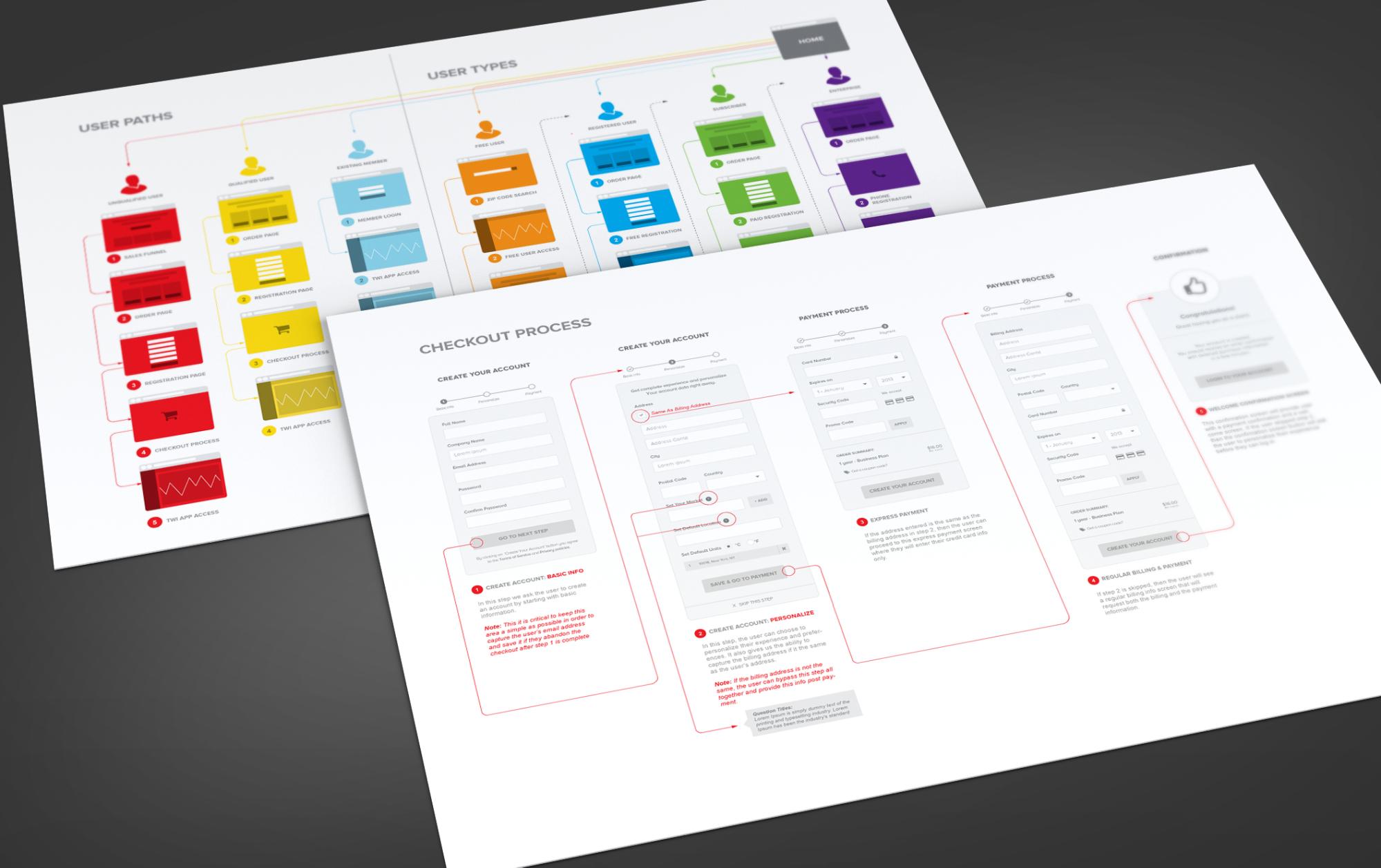
UX design wireframe for a mobile eCommerce checkout process (by Michael Pons )
Not limited to digital product design, user-centered design helps companies improve their service offerings across an array of touchpoints and products. UX design can be described as the application of user-centered design methodologies to the digital product design stack.
All in all, UX design is the practical application of empathy used to observe, analyze, and evaluate a user’s engagement with a digital product. It is a broad field with opportunities to engage in user research, information architecture, content strategy, user testing, prototyping, and more.
There are numerous schools of thought as to the application of UX design. Some call for a lean iterative approach, others for a research focus, but all are driven by creating experiences that are seamless, intuitive, and accessible across an array of touchpoints.
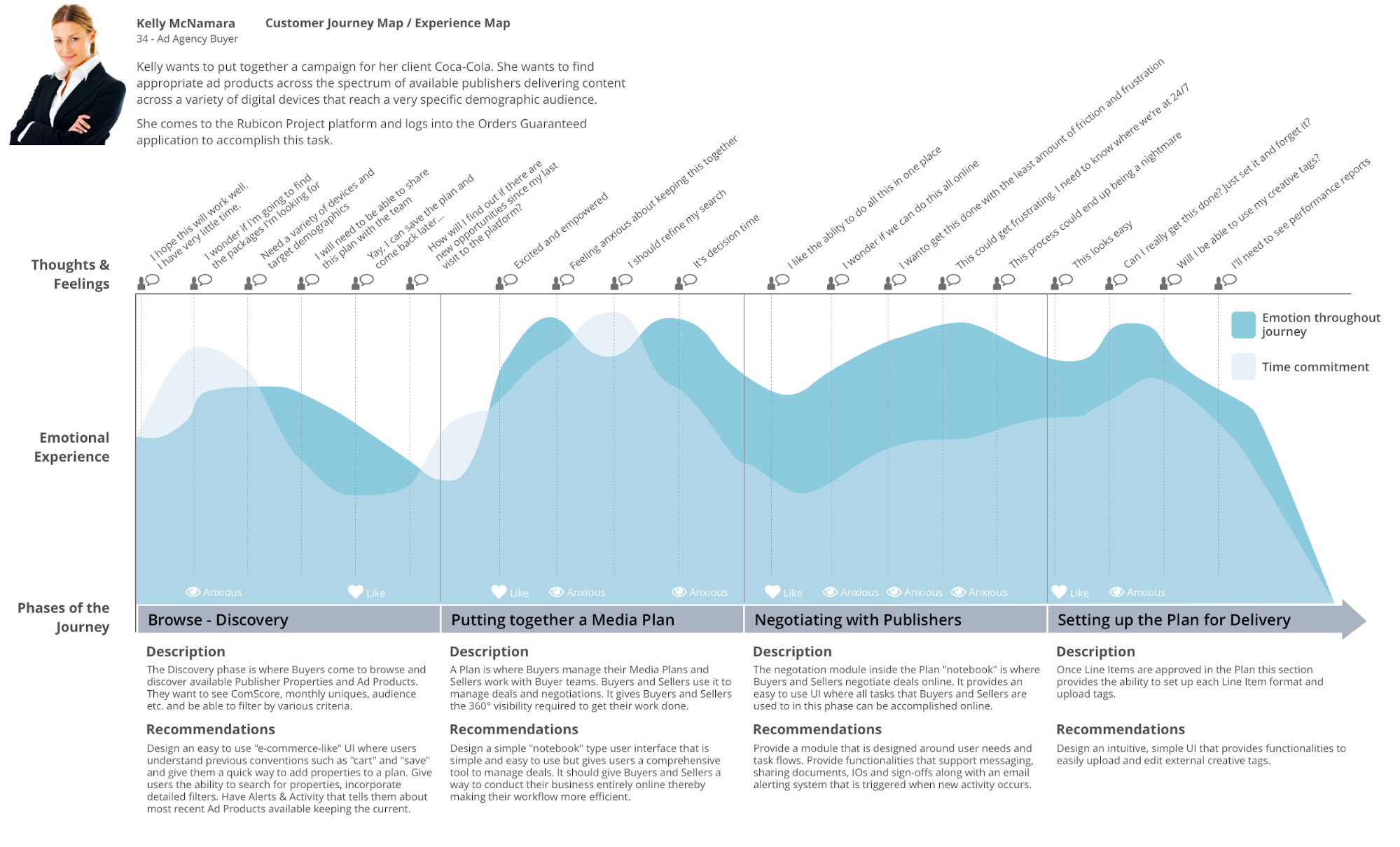
An experience map is crafted as part of a UX design process. (byMiklos Philips)
UX in the Digital Product Design Process
The best UX designers are masters of stepping into the shoes of others, understanding what those users’ needs are, and developing the journeys that will accomplish their goals. They leverage their ability to understand complex problems and use empathy to create value based on the opportunities they discovered. Moreover, they test if systems are delivering value for their end users in the way they were intended.
A UX design engagement will often start by defining a problem and developing profiles of end users (called “personas”) as well as use-case scenarios and potential solutions. This research will then inform the product development process until there are product prototypes ready to go through a round of user testing. The results from tests with end users are considered in another iteration of the product. This process is repeated until the stakeholders’ expectations match the experience and sentiment of end users.
The foundation of UX during product development is taxonomy, the process of organizing information into a hierarchy. The name for this in the industry is information architecture, and it is the framework for any digital project. IA is the process of cataloging content and arranging it into a sitemap. This is important for two reasons. First, it illustrates what information will live on a website, and how it will be organized. Its other purpose is to provide a scope for what wireframes are required.

A sitemap, representing a site's information architecture (byMiklos Philips)
To understand user behavior, UX designers will also utilize feedback loops during user testing. Analyzing quantified user data in parallel with qualitative insights gathered during focus group sessions helps UX designers identify barriers that are hindering the user’s experience.
When evaluating the usability of a digital product, UX designers look toheuristic analysis to determine whether or not it is following established patterns and principles of interaction design. Heuristics experts keep up to date with device interface guidelines and best practices to evaluate whether digital products work as users would expect them to.
A heuristic analysis is a great method to identify obvious usability issues before investing in a larger usability study. It is important to note that between 5 – 8 heuristics experts will uncover the greatest proportion of usability issues within an application.
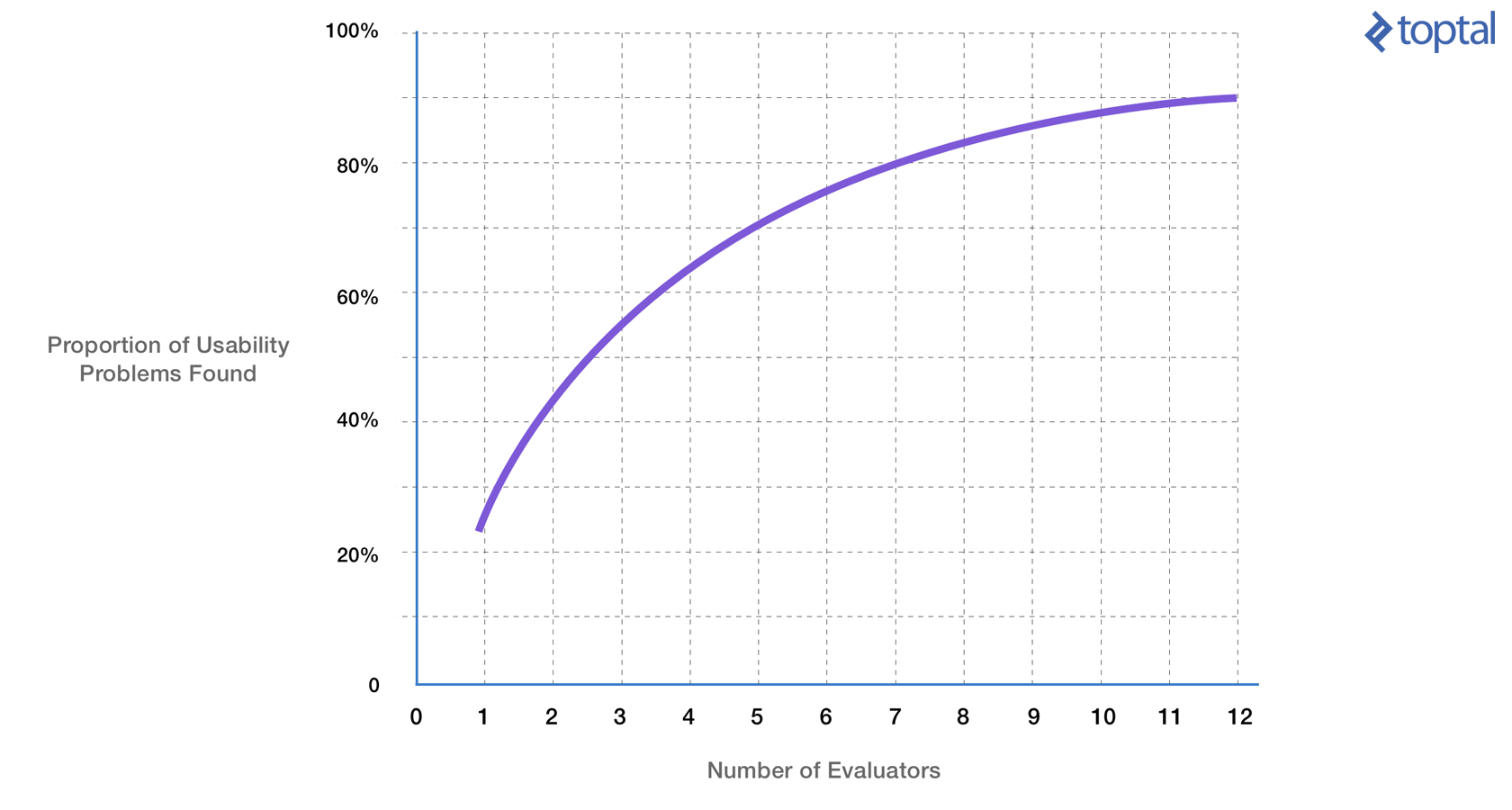
Notice that, after ten evaluators, there will likely be diminishing returns, but fewer than three can be too small of a sample to identify significant usability issues.
UX vs. UI
The line is oftenblurred between where UX stops and UI begins. A simple way to think about it is to compare it to a house. UX can be considered the frame, and UI the finishings. UX designers will often work with UI designers in a validation-driven role, testing whether aspects of a UI are working for end users.
At the end of the day, UI designers are responsible for bringing a brand’s identity into digital products and making the UI usable. On the other hand, UX designers work to define problems that need solving, as well suggesting and validating changes that will improve the efficacy of digital systems.
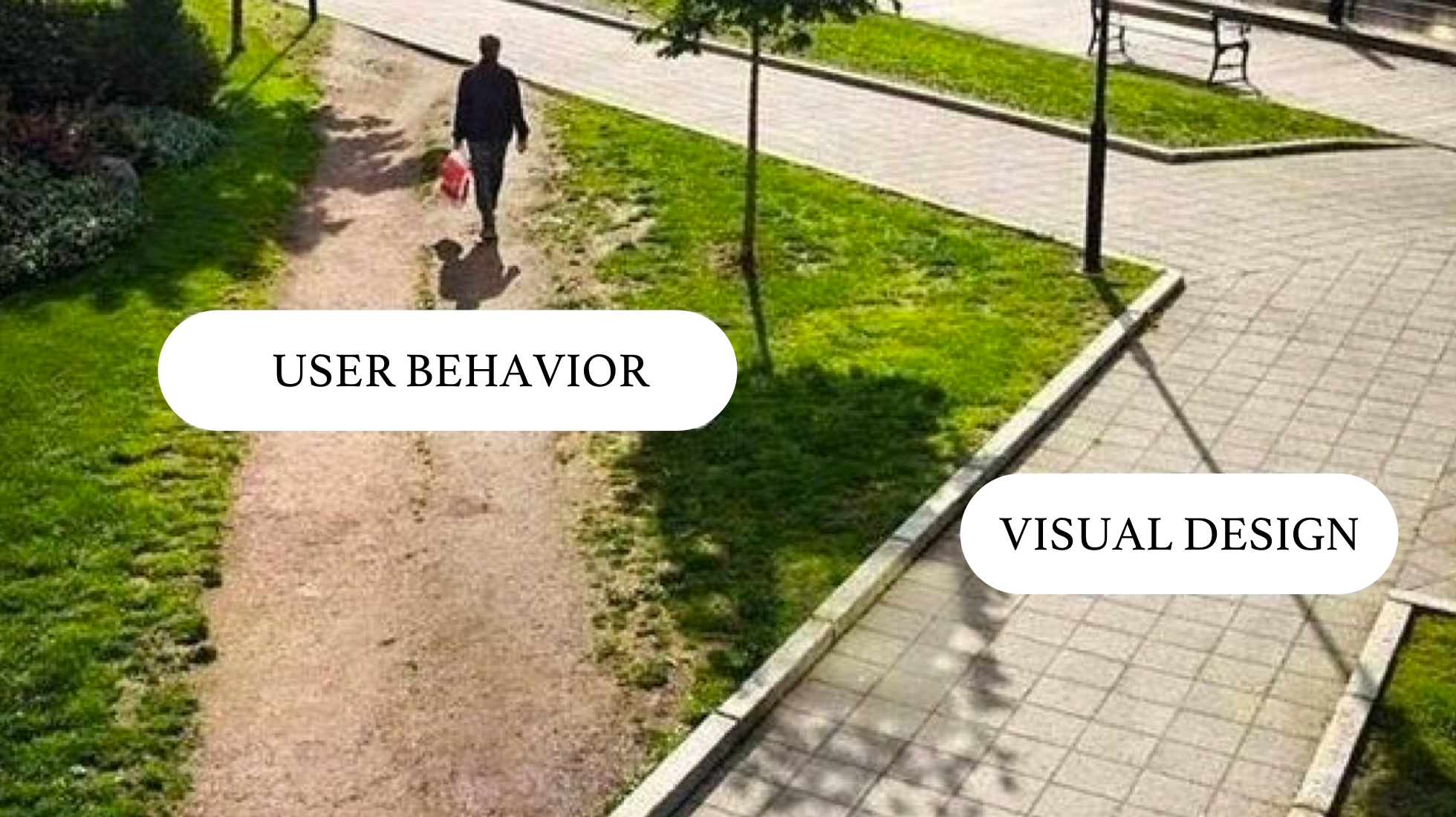
To be sure, there is opportunity to specialize in one or the other, but more often than not, individuals have competency in both UX and UI design. Some of these designers may also function as front-end UI developers and call themselves “full-stack designers.” As the gap between designers and developers gets smaller, there will be more unicorns capable of designing and building applications from the ground up.
Can You See UX Design?
Designer Dieter Rams is known for his commitment to having form follow function. In his 10 principles for good design Rams declares that “good design is as little design as possible. Less, but better – because it concentrates on the essential aspects, and the products are not burdened with non-essentials. Back to purity, back to simplicity.”
This commandment accurately explains the role of UX within the field of design.
In order to solve a problem using simple means, you must first understand the dependencies tied to its success. The application of this within the software development lifecycle requires a user-centered design approach, ergo “user experience design.”
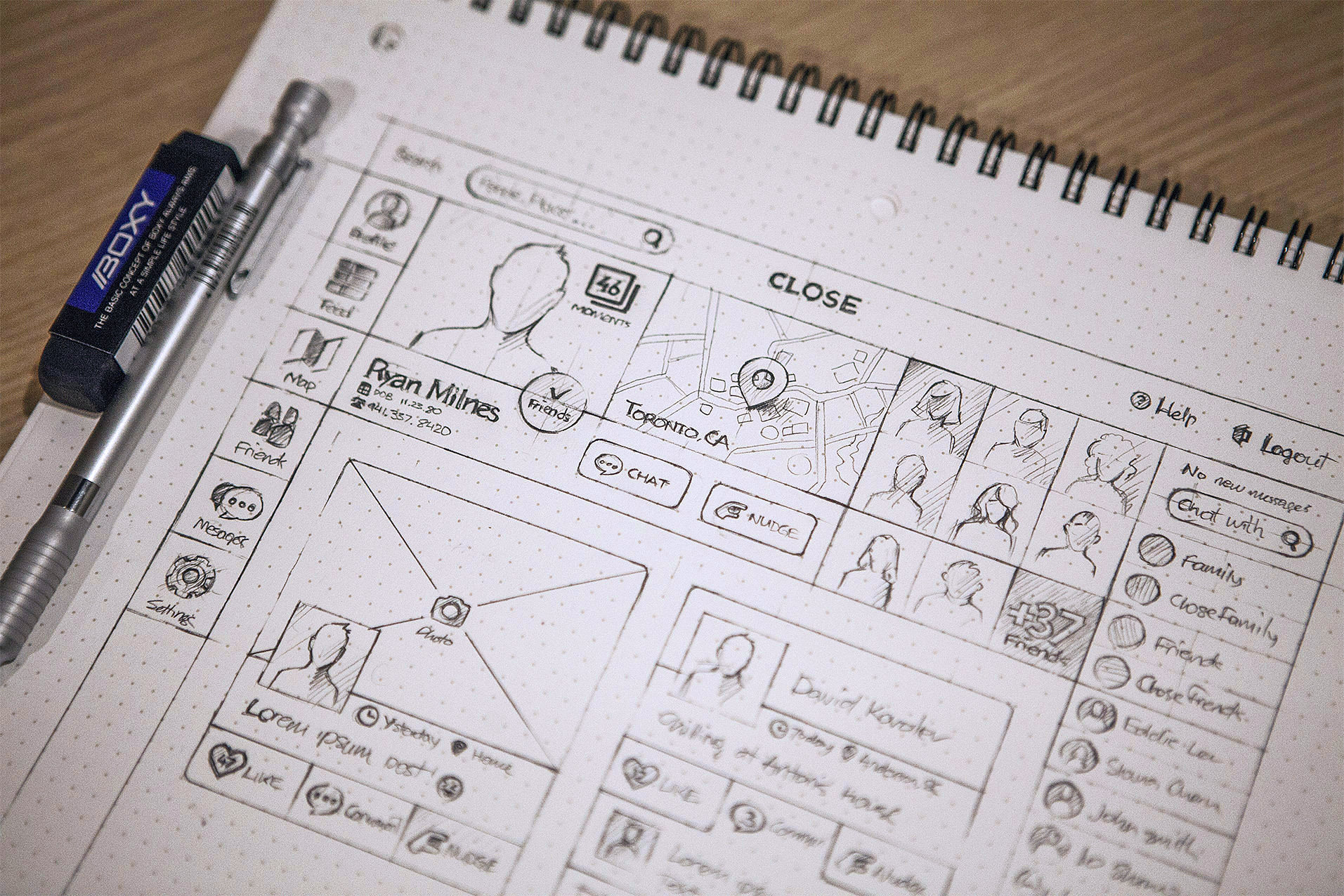
UI design sketch (by Eddie Lobanovskiy )
A digital product that has a successful user experience will feel intuitive to use, have clear calls to action, and will add value to a user’s relationship with a brand. Customers will never sit back and notice a good user experience—they will easily move through a service without frustration while being satisfied their expectations are being met.
Can you see UX design? Not necessarily, but users will undoubtedly feel it if a product has a less than satisfying user experience, inevitably ending in frustration and a negative sentiment towards the company responsible. The fact is, a bad user experience on the screen can cause frustration and anxiety in the real world that may result in a lasting resentment.
UX Design Methods
Ethnographic Research
UX designers use a variety of research methods such as surveys, observations, diary studies, focus groups, and competitive analyses to develop an understanding of users and what motivates them.
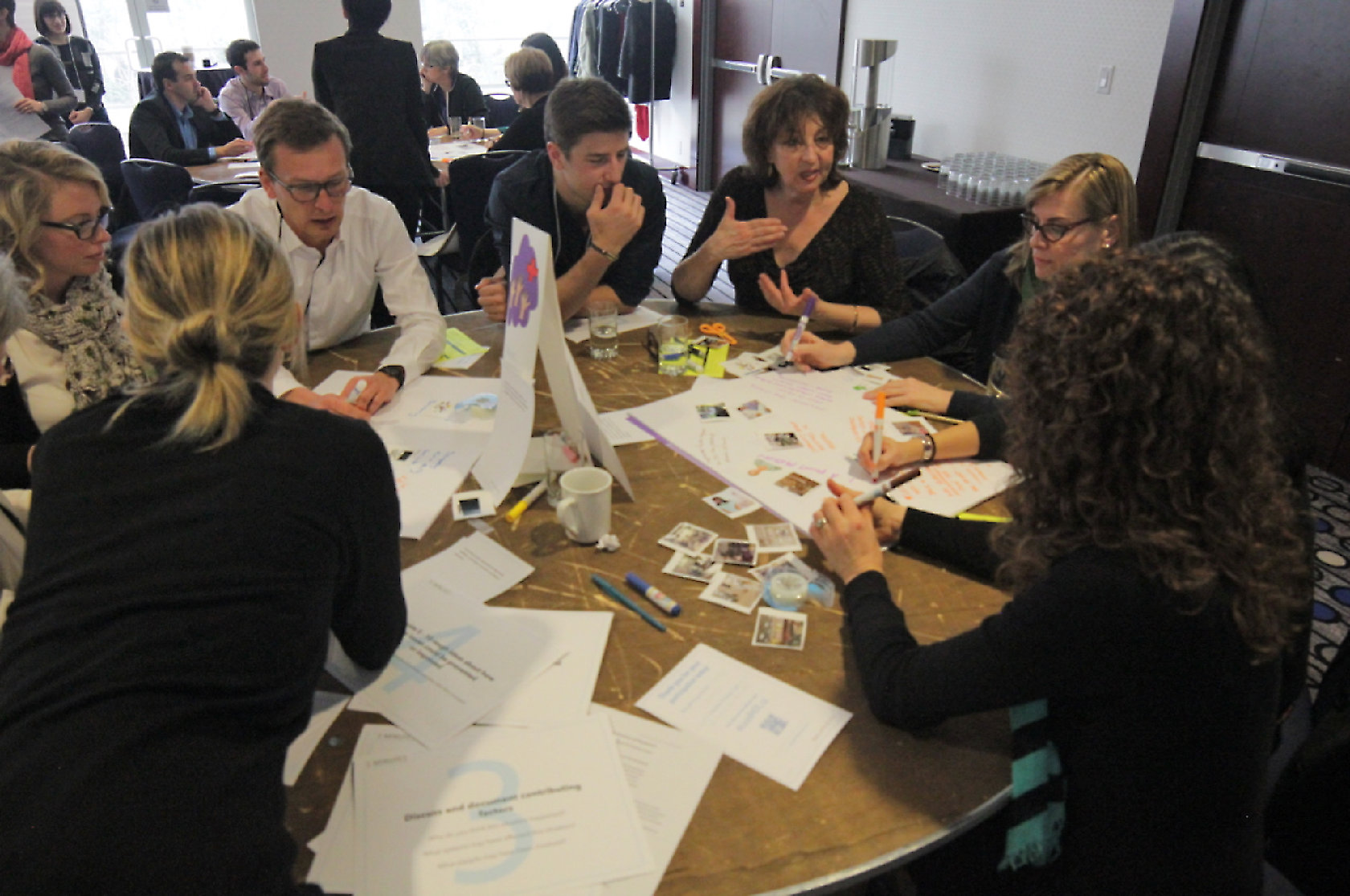
Participants taking part in a design research workshop (byStewart Pressney)
Personas, User Scenarios, and Empathy Maps
These are all common results of ethnographic research: personas are examples of potential end users, user scenarios illustrate the times in their lives where they will use the product, and empathy maps illustrate their feelings towards the product while they are using it.

Personas (byMiklos Philips)
Customer Journey Maps
User journey maps are often used to illustrate touch points within a scenario where an end user is interacting with a digital system. Customer journey maps are useful for identifying usability issues across omnichannel experiences.
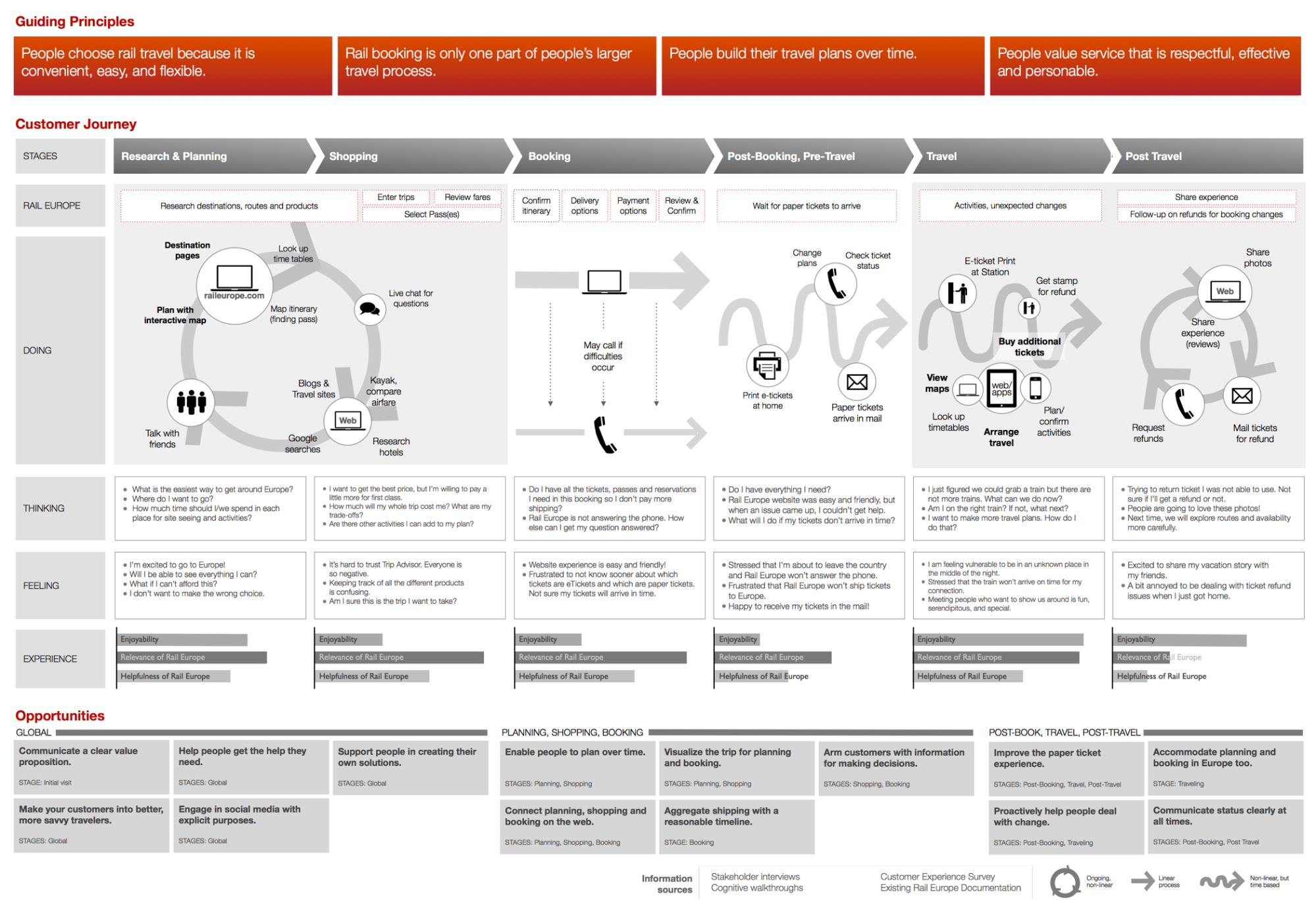 Click to see full-sized image.
Click to see full-sized image.
EuroRail customer journey map (byAdaptive Path)
Wireframes
Wireframes are the physical blueprints for screens that make up a product. Shown in low fidelity,wireframes help developers create the basic structure for an application before a UI is implemented. They are also a useful tool to put in front of end users in order to validate assumptions about products before they are built.
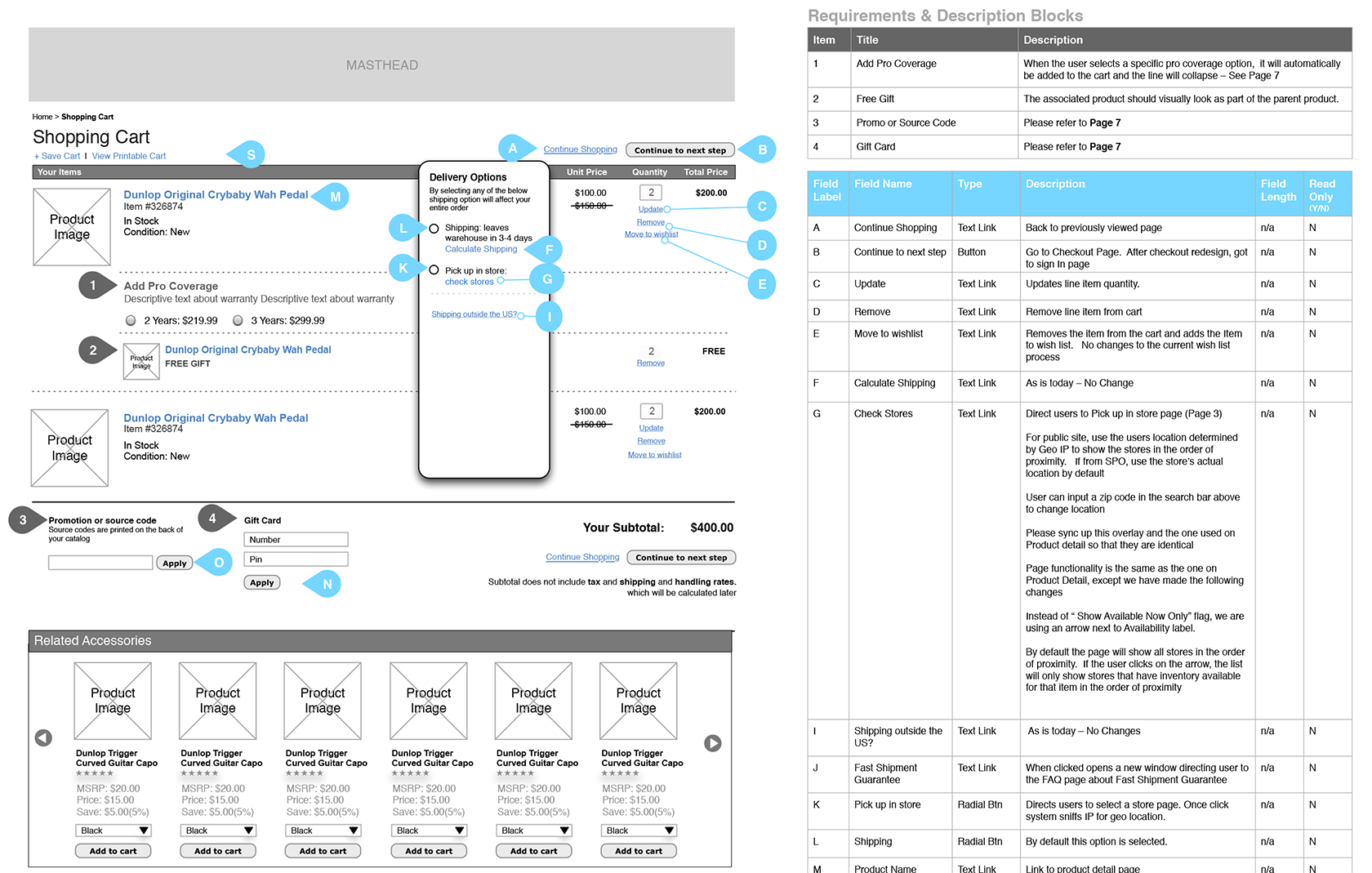
Annotated wireframes are one of the most common UX design artifacts. (byMiklos Philips)
Prototyping
Prototyping is an essential part of UX design because it helps to visualize how users will experience software before it is developed. There are a variety of prototyping tools available, like InVision, Adobe XD, and Principle. Prototypes can be used to test projects with end users as well as being a means for communicating designs to development teams.

Adobe XD prototyping (by Smashing Magazine )
User Testing
User testing is essential to validating whether or not a user is experiencing an application as designed. Some methods of user testing include A/B testing, eye tracking, heatmaps, and observations and interviews.
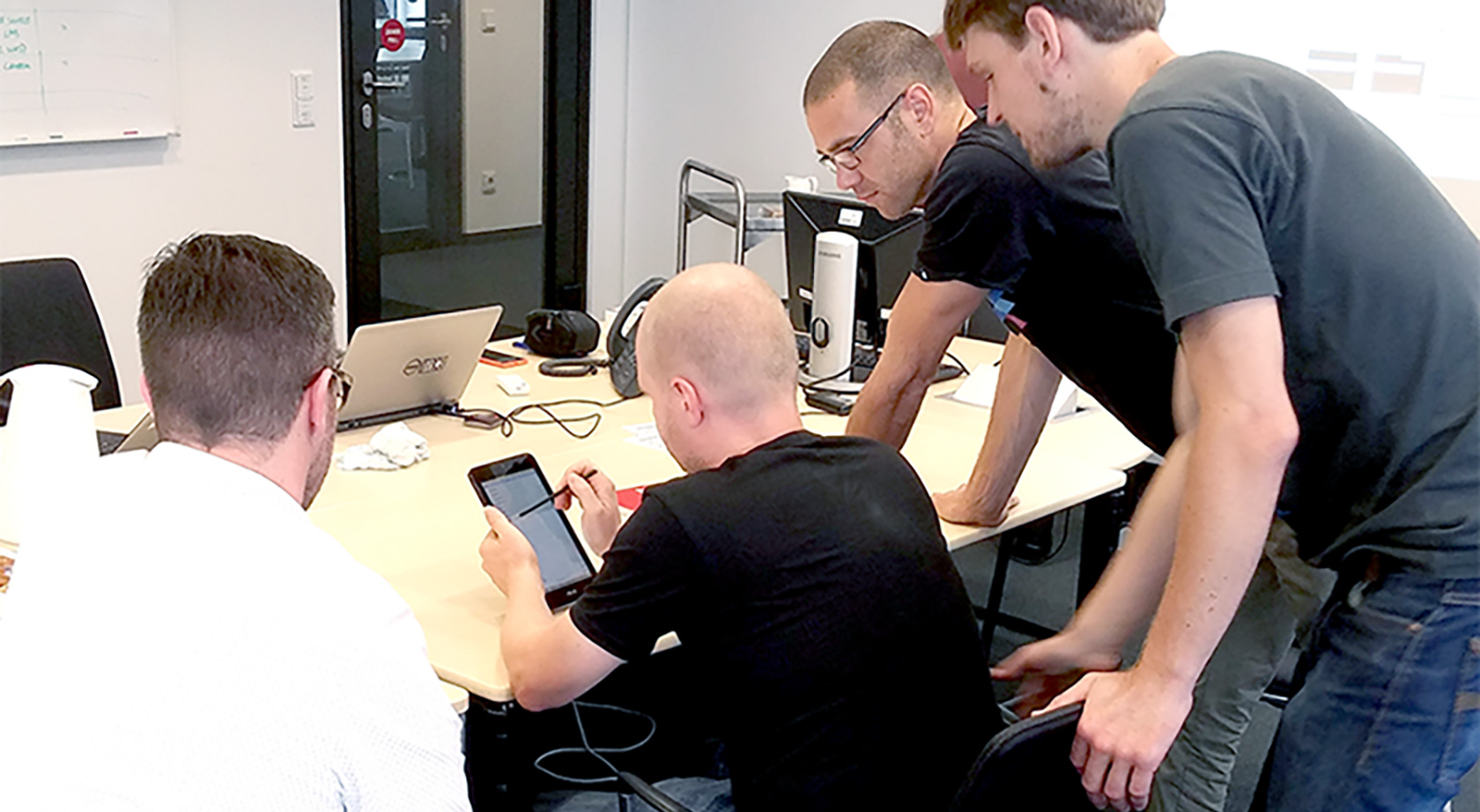
A user testing session with a mobile product at InVision
Heuristic Evaluation
A heuristic analysis is used to identify a product’s common usability issues so that the problems can be resolved, consequently improving the user’s satisfaction and experience and raising the chances of a digital product’s success overall.
Focusing on usability, a heuristic analysis is an evaluation method in which one or more experts compare a digital product’s design to a list of predefined design principles (commonly referred to as heuristics) and identify where the product is not following those principles.

Susan Weinschenk and Dean Barker (Weinschenk and Barker 2000) researched usability guidelines and heuristics from many sources (including Nielsen's , Apple, and Microsoft) and generated this set of 20 usability heuristics to check against.
The Importance of UX Design
UX design attempts to deliver the right solution, in the right way, at the right time, and delight people when they interact with a digital system. It’s important to engage a skilledUX designer in order to understand the user deeply and optimize digital products based on stakeholder and end user goals.
UX designers have a knack for stepping into the shoes of others and empathizing with their circumstances—“walk a mile in the user’s shoes”—which gives them the ability to create value in the relationship between brands and consumers.
At the end of the day, if design is considered an investment in the success of a product, then engaging with a good user experience designer early on is a great way to strengthen that investment for the long term.
• • •
Read more UX-related articles on the Toptal Design Blog:
- The 10 UX Deliverables Top Designers Use
- What is UX Design? Common Misconceptions and UX Myths
- Boost Your UX with These Successful Interaction Design Principles
- Master Your Craft with These Top UX Tools
Understanding the Basics
What is the difference between UX and UI?
The interface is not the solution. UI (user interface) design generally plays an important role in the work of a UX (user experience) designer, but it is not the only part. Think of it this way: UX design is the journey and the UI is the destination.
What is the UX process?
The UX design process is the practical application of empathy used to observe, analyze, and evaluate a user's engagement with a digital product. It is a broad field with opportunities to engage in user research, information architecture, content strategy, user testing, prototyping, and more.
What is a user experience (UX) designer?
A UX designer employs a user-centric approach to problem-solving. After rigorous analysis of business goals and technical feasibility, they conduct user research and design user experiences that ensure that the right solution is delivered in the right way, at the right time, providing optimum user experiences.
What is a heuristic evaluation?
A heuristic evaluation is used to identify a product’s common usability issues so that they can be resolved, consequently improving user satisfaction and raising the chances of a digital product’s overall success. Typically, a usability expert also performs a heuristic analysis to identify usability issues.
What is an experience map?
An experience map is a visual representation illustrating a user’s flow within a product or service—their goals, needs, anxieties, expectations—i.e., the experience throughout their interaction with a product. It’s typically laid out on a linear timeline showing touchpoints between the user and the product.
What is a user scenario?
A user scenario (or use-case scenario) is often used in product development and describes a small story where the user’s tasks, goals, environmental context and technology used is defined in order to come up with the best solution (features and functionality) for an interaction in a digital product.
About the author
member since July 29, 2017
UI Design UX Design Art Direction Sketch UX Documentation Wireframing UX Research
Stewart has developed a user centered design and prototyping workflow proven successful in the fields of healthcare, education, and eCommerce. From branding and logos to wireframing, website design, and coding, he merges intuitive design thinking with practical knowledge to better connect businesses with their customers. [click to continue...]
Hiring? Meet the Top 10 Freelance UX Designers for Hire in June 2018
Recommend
About Joyk
Aggregate valuable and interesting links.
Joyk means Joy of geeK
